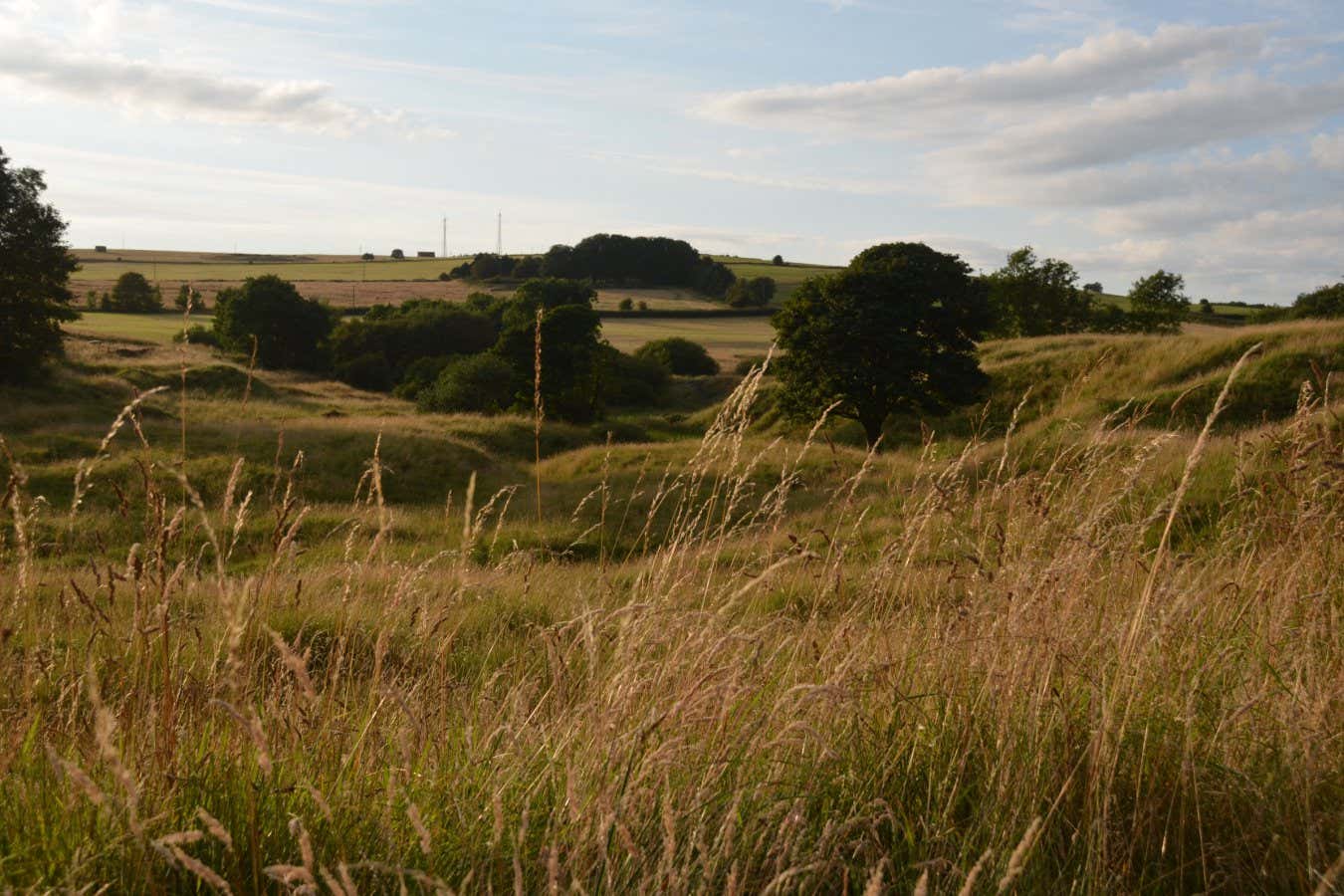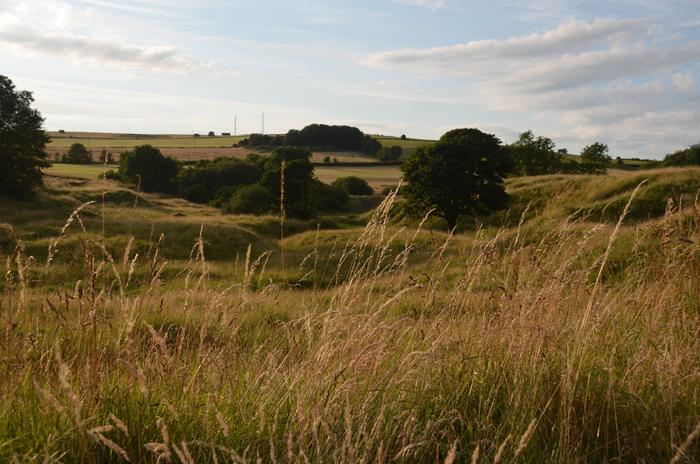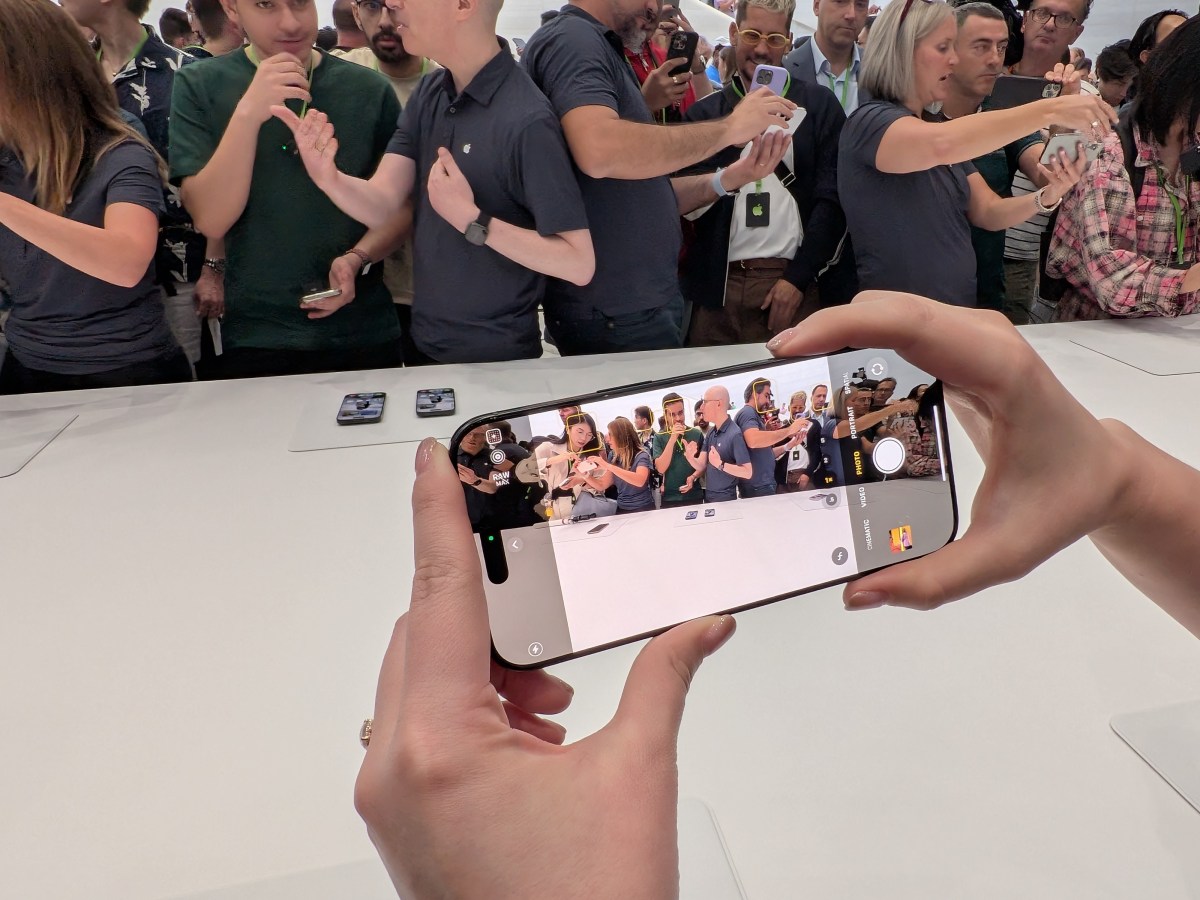Abstract
Fissure fill deposits from the Late Triassic to Early Jurassic of England and Wales preserve a diverse small tetrapod fauna including procolophonids, an important group of Permian and Triassic parareptiles that radiated across Pangaea following the end-Permian extinction event. Procolophonids are currently known from two fissure fill sites: incomplete and isolated remains from Ruthin Quarry (Wales) and type and referred material of Hwiccewyrm trispiculum from Cromhall Quarry (southwest England). The age of the Cromhall fissure deposits has been debated but recent radiometric dating suggests a Carnian age for at least some of the fossil assemblages. Here, we present material from several fissure assemblages at Cromhall, which are interpreted as stratigraphically older than the assemblage that yielded Hwiccewyrm. We describe a new species of leptopleuronine procolophonid based on partial remains with unique tooth morphology. Threordatoth chasmatos gen. et sp. nov. is characterized by maxillae with a reduced number of complex tricuspid teeth along with dentaries that bear labiolingually compressed monocuspid teeth and in some cases have a peculiar edentulous tip. These distinct tooth morphologies occlude closely, perhaps facilitated by a flexible dentary symphyseal connection. This unique combination of characters may suggest a high degree of oral food processing of a mode unlike other procolophonids, occurring among the broader leptopleuronine adaptation towards diets of high-fibre herbivory/omnivory and insectivory. Phylogenetic analysis places the remains of Threordatoth as a derived leptopleuronine, sister taxon to Hwiccewyrm, in a clade with taxa including Soturnia, Hypsognathus, Libognathus and two unnamed leptopleuronines from the southwest USA.
Keywords: Procolophonidae, fissure fill, Late Triassic, Leptopleuroninae, Parareptilia, dental complexity
SYSTEMATIC PALAEONTOLOGY
PARAREPTILIA Olson, 1947 sensu Laurin & Reisz (1995)
PROCOLOPHONOIDEA Romer, 1956
PROCOLOPHONIDAE Seeley, 1888
LEPTOPLEURONINAE Ivakhnenko, 1979
 |
| Threordatoth chasmatos gen. et sp. nov. UMZC 2023.122 (holotype), partial left maxilla with four teeth in: A, lateral; B, medial; C, ventral; D, dorsal view. |
Genus Threordatoth nov.
Derivation of name: The genus name is derived from Old English and recognizes the tricuspid nature of the maxillary teeth of this taxon: þrēo meaning ‘three’ (undeclined) in the Mercian dialect; orda meaning ‘points’, or ‘spear points’; and tōþ meaning ‘tooth’.
Threordatoth chasmatos sp. nov.
Derivation of name: The species name is derived from Greek: χάσμα meaning ‘yawning chasm’, or ‘fissure’, referring to the fissures in which Threordatoth and numerous other taxa are preserved.
Diagnosis Distinguished from other procolophonids by the following combination of features: low maxillary tooth count (three or four); maxillary crowns are triangular in occlusal view, being strongly mesiodistally expanded at the labial margin (best developed in tooth 2); distal margins of the maxillary crowns are concave in occlusal view; maxillary crowns are tricuspid, with two clearly separated labial cusps; distolabial cusp of maxillary crowns is enlarged relative to mesiolabial cusp; two foramina on lateral surface of the maxilla, the anterior foramen being larger and positioned at the mid-height of the maxilla above the mesiolabial cusp of the second maxillary tooth, and the posterior foramen being positioned above the space between the second and third maxillary teeth and closer to the ventral margin.
 |
| Life reconstruction of Threordatoth chasmatos gen. et sp. nov. among the fissures of Carnian–Norian southwest England, based in part upon aspects of the anatomy of the closely related Hwiccewyrm.
Artwork by Mark Witton. |
Luke E. Meade, Richard J. Butler, Marc E. H. Jones and Nicholas C. Fraser. 2024. A new procolophonid with complex dentition from the Late Triassic of southwest England. Papers in Palaeontology
x.com/ThePalAss/status/1865009467596628266








Leave a Comment